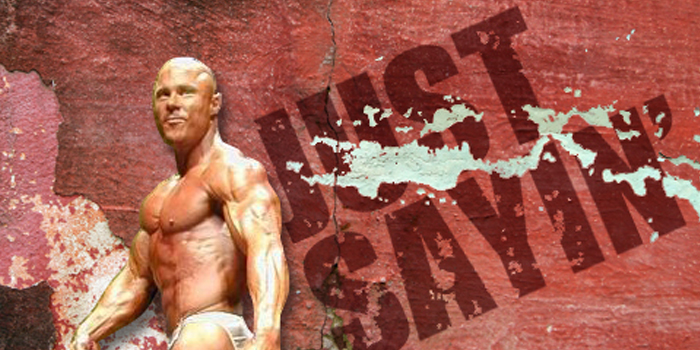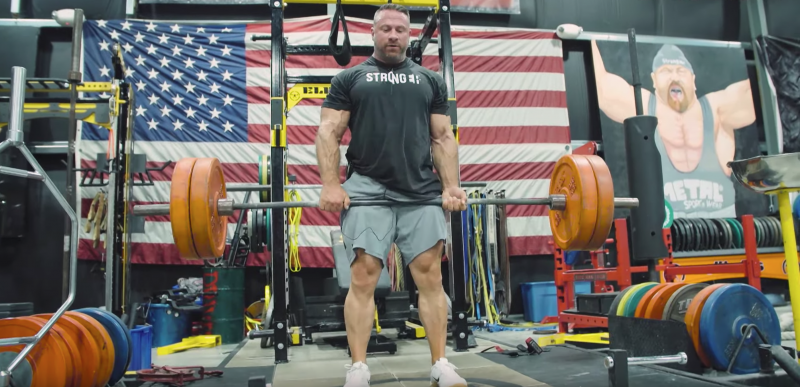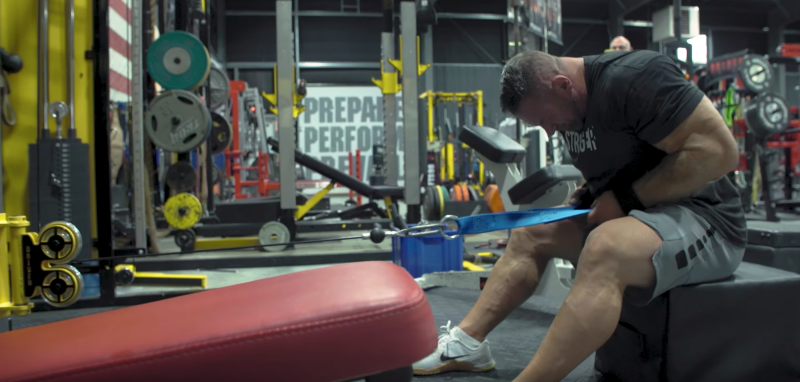
Typically, we hear the cliché “throw the scale in the trash” in relation to getting ripped or losing weight. I have never subscribed to this theory because I feel that the scale is an invaluable tool to help gauge progress. Though it is only one measure of progress, it is still important to know whether scale weight is fluctuating and how much. At the same time, I also respect the point of the statement because too many people get caught up in the numbers and start to rely only on the scale as their only marker for success or failure.
The same can be said for gaining muscle in the off-season and yet most all of us still gauge progress in the off-season by how much weight we are gaining. If you haven’t said it, you’ve thought it: “I have gained X amount of pounds and I am in the same or better condition…” Though the latter part of that statement can be argued because too many of us are delusional and only see what we want to see, my point remains that we are almost always focused on how much weight the scale says we have gained when trying to add muscle.
RECENT: Social Media Eliminates the Small Pond
Here’s an idea: Use the scale when cutting and don’t even bother stepping on it when you are in a building phase, adding muscle to your frame. Why? Thanks for asking.

It is my opinion that force-feeding for size started in the ‘90s. At this same time, guts all of a sudden became turtle-shelled, and this was not a phenomenon prior to the ‘90s. If you look back at the ‘80s, you didn’t see the midsections that you did in the ‘90s. Rich Gaspari was labeled “blocky,” but by the mid-‘90s in comparison, his waistline and midsection weren’t even close to being as distended as the physiques that would follow. You might argue that he wasn’t as big as the bodybuilders who would follow in the ‘90s, but that’s not the point. Gaining a ton of muscle as quickly as possible is not always the best modus operandi for building the best physique possible.
In bodybuilding, numbers aren’t represented on stage; an overall look or “total” package is (I almost hate to use that phrase for reasons I won’t get into here). It makes zero sense to add 20 pounds of muscle — moving into a higher weight class — only to have your midsection increase by four inches or more. If you look back on pictures of pro bodybuilders five years prior, you will not notice much of a difference in their overall look after they gain another 10 to 20 pounds. Why? Because their waists also grew right along with everything else. You now have a physique with the same dimensions or ratios but is simply larger. If you were to have put all of that growth into the shoulders, chest, back, and legs, but not the waist, you would have a DRAMATICALLY improved physique. However, that rarely happens.

Instead of using scale weight to gauge progress in an off-season, you can use these two methods:
1. Visual (mirror/progress pictures)
After all, you win or lose based only on how your physique appears visually. Your weight has no impact on how you place in a show.
2. Strength increases in the gym
The easiest way to tell if you are increasing muscle mass is to track increases in strength within bodybuilding rep ranges. Basically, if you are training within bodybuilding (hypertrophy) rep ranges and you are getting stronger, you are “growing” muscle tissue. I make the point that you must be increasing in bodybuilding rep ranges because if you are increasing strength within lower rep ranges like those used in powerlifting, hypertrophy is not a foregone conclusion.
Something else that most people need to hear is you don’t have to increase your scale weight to improve your physique. I know this flies in the face of what most of you reading this will think. I have seen time and time again (and if you think about it, you may have as well) where a competitor will show up at the top of a weight class for three or four years and each year improves the look of their physique, even bringing up lagging body parts. Even if you disagree with my last statement, I would bet you would agree with this one: We have all seen, countless times, where competitors laud their off-season muscle gains (scale weight) only to show up to a show not looking any different than they did in the lighter weight class.
READ MORE: Phases of Performance Nutrition
My point is simple: Focus more on improving your physique and spend less time thinking that to do this you need to add scale weight. This is not to say that you won’t end up gaining scale weight, anyway. It’s just that without the main focus being on scale weight, the overall look will be better when you hit the stage, and the added scale weight from the off-season will be clean weight and not just added fluff that you need to diet off before you hit the stage. Gaining more muscle only to diet it off due to having to lose more body fat while prepping for a show isn’t logical. Be patient and be disciplined. Don’t be that guy who claims a 20-pound increase in muscle only to show up looking the same, but in a higher weight class. Just Sayin’.











If you are implying that I am contradicting myself, my personal situation with my training is not the norm. First, I am much leaner than the large majority of people in the off season. Second, every single time I make a caloric adjustment -- whether small or large -- I do not get stronger, I do not get leaner (recomp) and I do not gain scale weight. Understand that when I write articles they are written more towards informing the large majority of people who would fall within "normal" parameters. That means that most people absolutely do get caught up in the scale weight and may not be growing (other than getting fat). That's typically what bodybuilders do when they say they are "bulking"; they are "getting fat." My situation is completely different.
I am simply not growing or progressing, at all, outside of a few increases in strength over the last few weeks after blasting almost 12 weeks, now. So, I am stuffing my face not just to push the scale weight up, but also to simply get SOME kind of response in strength, as well. If I were increasing in strength and the scale wasn't moving up, I wouldn't be complaining anywhere near as much as I am. I am not looking for 10 or 20 pounds here. I have been trying to add the equivalent of roughly 3-5 pounds, in this same condition, for the last 6 months. That certainly wouldn't qualify as being obsessed with the scale, I don't think.
I also stated in the article that the visual is what matters more than the scale but my visual hasn't changed much, if at all. Obviously, this is equally as concerning.
So, when you commented, you only mentioned the scale. You could have also mentioned that I noted in my logs that I not only haven't been gaining scale weight but I also haven't changed my visual look and that my strength gains were pretty non-existent outside of the last few weeks.
Let me know if this adds clarity to your posted response.